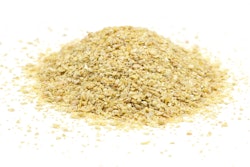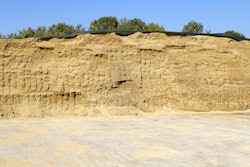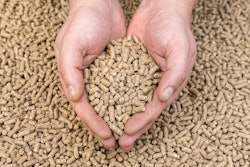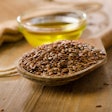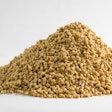
Sesame, a versatile and nutritious oilseed crop, yields oil and generates various byproducts such as sesame meal, bran and pods, and rejected whole seeds. These byproducts have garnered attention as potential ingredients in livestock and poultry feeds due to their nutritional content and local economic viability. However, like any feed ingredient, they come with their own set of advantages and disadvantages. Let’s explore the pros and cons of incorporating sesame byproducts into animal feeds.
The benefits
Nutritional value: Sesame byproducts are rich in protein (45% to 48% in meal), fiber (7% to 10%), and essential minerals such as calcium, phosphorus and iron. Sesame meal, in particular, contains high-quality protein with a rather well-balanced amino acid profile, making it an interesting component in animal diets.
Cost-effectiveness: Utilizing sesame byproducts can be locally economically advantageous for livestock and poultry farmers. These byproducts are often available at lower prices compared with primary feed ingredients like soybean meal or corn, thus reducing feed production costs. However, they are not international commodities.
Improved digestibility: Sesame byproducts, when properly processed, can enhance feed digestibility for animals. Processing methods such as dehulling and grinding aid in breaking down anti-nutritional factors and improving the availability of nutrients, leading to better feed utilization and animal performance.
Environmental sustainability: Incorporating sesame byproducts into animal feeds promotes sustainable agricultural practices by reducing waste and maximizing resource utilization. It contributes to the circular economy concept, where agricultural residues are repurposed to create value-added products, hopefully minimizing environmental impact.
Diversification of feed sources: Including sesame byproducts diversifies the feed ingredient base, reducing reliance on single feed sources. This diversification can enhance feed resilience against price fluctuations and supply chain disruptions, providing stability to livestock and poultry production systems.
The challenges
Anti-nutritional factors: Sesame byproducts may contain anti-nutritional factors such as phytates, tannins and oxalates, which can interfere with nutrient absorption and lead to reduced animal performance. Proper processing techniques such as heat treatment or enzyme supplementation may mitigate these anti-nutritional effects.
Variable nutrient composition: The nutrient composition of sesame byproducts can vary depending on factors such as seed variety, processing methods, mixing of different waste streams and storage conditions. Inconsistent nutrient profiles may pose challenges in formulating precise and balanced diets, requiring regular quality assessment and adjustment.
Palatability and acceptance: Some animals may exhibit aversion to feeds containing sesame byproducts due to differences in taste and texture. Palatability issues can impact feed intake and overall animal performance, necessitating careful formulation and gradual introduction of these ingredients into the diet. However, the major issue is often found to be oxidized fatty acids from prolonged storage.
Potential allergenicity: Sesame allergies are prevalent in humans, and there’s a possibility of allergic reactions in animals consuming feeds containing sesame byproducts. Farmers need to be aware of this risk and take appropriate measures to prevent allergic incidents among livestock and poultry.
Regulatory considerations: Regulatory requirements governing the use of sesame byproducts in animal feeds may vary across regions. Compliance with labeling, safety and quality standards is essential to ensure legal compliance and safeguard animal health and welfare.
In conclusion, incorporating sesame byproducts into livestock and poultry feeds offers several benefits, including nutritional value, cost-effectiveness and environmental sustainability. However, challenges such as anti-nutritional factors, variable nutrient composition and palatability issues need to be addressed through proper processing, formulation and management practices. By carefully evaluating the pros and cons, farmers can make informed decisions regarding the inclusion of sesame byproducts in animal diets, ultimately enhancing feed efficiency and supporting sustainable livestock and poultry production.



